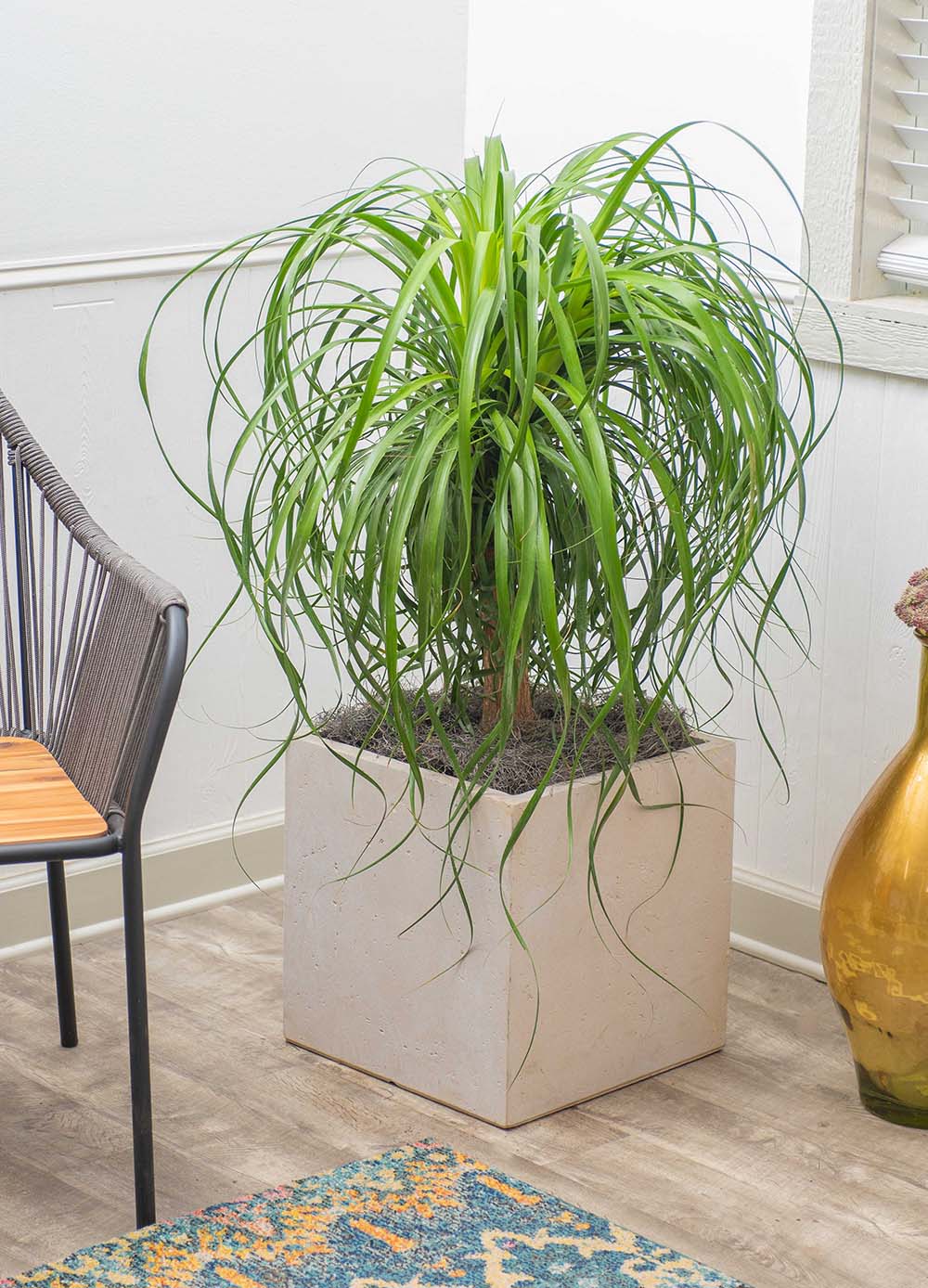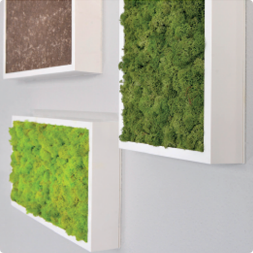How to Care for Your Ponytail Palm
At PLANTZ, we have a wide range of plants for just about any type of home. Now we’d like to introduce you to a very special plant that requires little maintenance but loves light.
We’re talking about the Ponytail Palm.
It’s a beautiful plant that has a few surprises (it’s not actually a palm, for example) but can add a new level of décor to just about any room. The Ponytail Palm is also known as the Elephant’s Foot Plant, and while neither name is truly accurate (it’s a Beaucarnea recurvata, to be precise), there are very good reasons why it has those names.
It’s a Ponytail Palm because the leaves, when grown out, resemble a pony’s tail. And it’s known as the Elephant Foot Plant because the stem’s base will swell to an unusual shape, sometimes resembling an elephant’s foot. The swollen base retains moisture in preparation for the dry season in its native eastern Mexico. While unusual in its own way, it also has a comfortable, attractive look that fits in with a variety of home designs.
Let There Be Light!
The Ponytail Palm loves light, so bright light will keep it happy and healthy. But it’s also a relatively forgiving plant, so you don’t have to be perfect here. If you can make sure it gets bright light most of the time, it can adapt to some lower-light conditions. But remember, more light is better. As long as you’re making sure it gets enough exposure to bright light, it will reward you with a healthy look as it grows.
One caveat: Like most living things, your Ponytail Plant doesn’t do as well when thrown into a shocking new environment. If you’re going to bring it into (or out of) bright light, do it gradually over the course of a few days. Give it some time in both environments, and let it transition to a new area gradually. If you let it get accustomed to its new surroundings, and it will adapt better and maintain its beautiful look.
Easy on the Water
As a succulent coming from an arid climate, the Ponytail Palm doesn’t expect a lot of water. Since you’re bringing it in as a houseplant, you want to take care not to over-saturate it. Let the soil get dry between waterings (you might find yourself spacing them out for a month or so), and be careful when repotting. If you put it into a pot that’s much larger than the previous one, more water will accumulate and it will get too much. You want to get a pot that’s only an extra inch or two wider than the previous one, and it won’t suffer from too much water. Check out our Watering Guide for more details!
Good for Pets, but Be Careful
Your Ponytail Palm won’t be a danger to your cat or dog, but the reverse might not be true. Some cats find the large base and healthy trunk appealing and might be tempted to scratch it. And while the plant can easily maintain its healthy look under good conditions, it will succumb to too much physical duress. So be mindful of how your cats and dogs react to your new Ponytail Palm, but don’t worry about the plant harming them.

Slow and Steady
One thing your Ponytail Palm won’t do is impress you with its speedy growth. It’s a slow, steady pace for this plant. Make sure you’re comfortable with its general height when you get it (we offer two sizes) because it won’t be shooting up immediately. It will grow over time, but you want to enjoy it at its leisurely pace to full maturity.
Pruning, Cleaning, and More
When you get your Ponytail Palm from PLANTZ, it will have one stem and one head, which reduces the need for pruning. If you see leaves turn completely brown, you can remove them at the stem. Brown tips can be trimmed with sharp scissors.
You’ll also want to feed your plant, but don’t worry about that requirement when you first get it. Your Ponytail Palm will have plenty of nutrients from the nursery, so wait about six months before using fertilizer. Use a formula designed for interior plants, our Foliage Pro fertilizer is a great option. Apply quarterly, and it should do just fine.
Your Ponytail Palm (and plants in general) thrive when they’re kept clean. A towel soaked with light, soapy water will keep the leaves clean when applied gently. And mealybugs, mites, and other pests can be sprayed with a light soap solution and wiped down. Taking care of your Ponytail Palm will keep the leaves looking great, allow it to breathe and photosynthesize, and provide the look you imagined when you brought it into your home.
Just be careful when tending to it. The leaf margins are serrated and pleasant to the touch pulling away from the stem but going against the grain can irritate (or even cut) unprotected hands. But overall, the Ponytail Palm is a low-maintenance, hearty plant with a look that can change the décor of a room. Take good care of it, and it’s sure to return the favor.
Need More Help?
If you have more questions or want to make sure the Ponytail Palm is the right plant for your home, you’ve come to the right place. We don’t just sell plants; we love them. We want a perfect match between customers and plants, and we can offer our extensive experience and knowledge to make sure we find it for you. Just use our contact page with any questions.


















